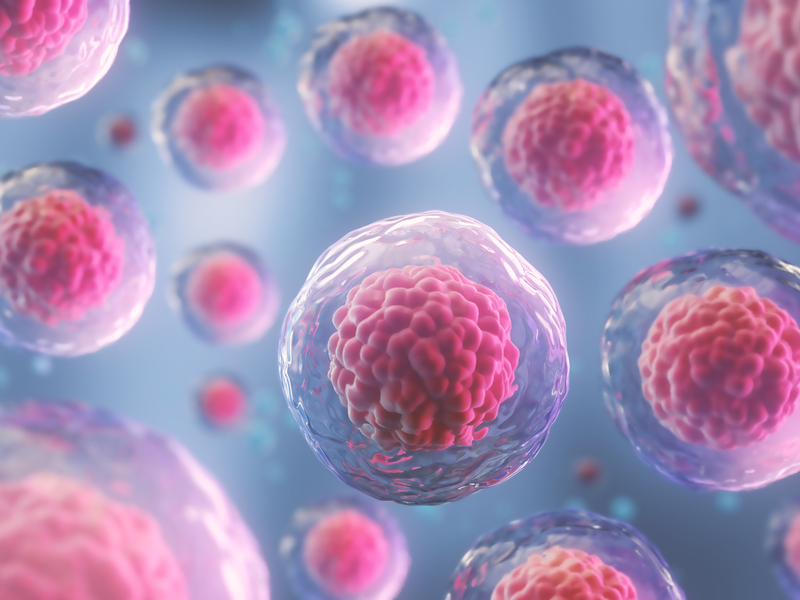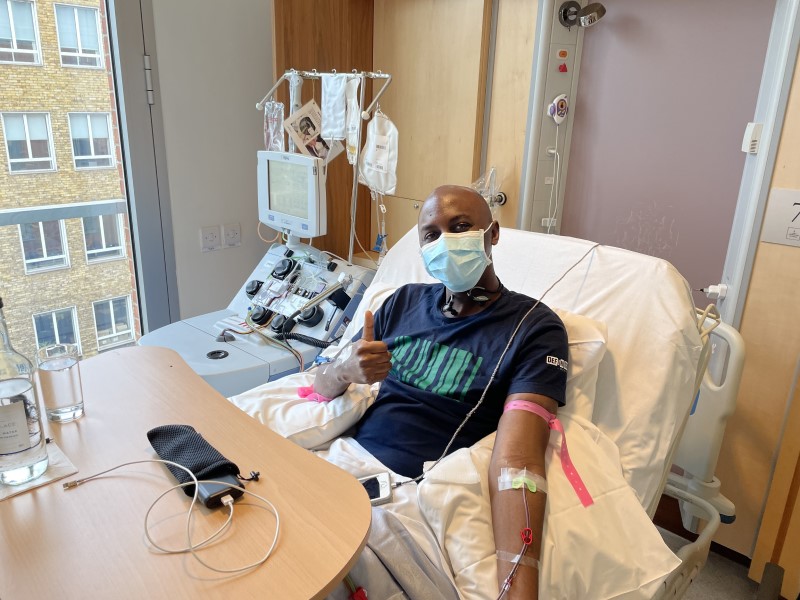A blood cancer diagnosis can understandably be devastating, but today it is by no means a death sentence. Clinical research has resulted in a range of life-saving treatments.

One of these treatments is stem cell therapy. Used to treat conditions such as leukaemia and lymphoma, a patient’s damaged blood cells are replaced with healthy ones through a stem cell transplant, after the stem cells have been extracted from a donor’s blood or bone marrow.
At least five people begin the search for a matching stem cell donor each day, which makes donations all the more important.
We spoke to Marvin, who recently donated his stem cells to a complete stranger. Just a few weeks earlier, he’d been genetically matched with the recipient, a patient who desperately needed his stem cells.
When did you first hear about the possibility of donating stem cells?
A few years ago, I saw an advert for a stem cell register at a motorway station. I was curious, but like most of us, I was busy and didn’t do anything.
Maybe a year or so later, I was scrolling through social media and watched a video showing a stem cell donor meeting a recipient. I was so moved by the story that I instantly filled in the online registration form.
I received a cheek swab in the post that I sent back and, after a few days, I was on the stem cell register. I didn’t really think about it again until a few years later I received an email from the blood cancer charity, Anthony Nolan, saying they had matched me with someone who needed my stem cells.
What did the preparation process of donating your stem cells involve?
Initially, I received an email followed by a call from someone at Anthony Nolan. They explained the whole process to me and the potential side effects I could experience after donating.
A nurse then visited my home to take blood samples to confirm that I was a match with the recipient and to check my overall health. A few weeks later I visited The London Clinic for a full medical examination, which was huge benefit for me personally. Every part of my physical and mental health was examined.
A few days later, I was told that I was ready for the donation itself. Before donating, I received four injections to increase the number of stem cells in my circulating blood. These excess stem cells would be the ones the donation process would collect.
I felt some side effects from the injections – tiredness and aching – but these were expected. I was told that any symptoms felt during the process were due to the increased production of stem cells and, once they’re extracted, donors tend to feel normal again pretty quickly.
What happened on the day of your donation?
After the injections, I travelled by train to London and stayed overnight in a hotel. I didn’t spend any of my own money throughout the process – my medical examination, transport, accommodation and meals were all reimbursed.
When I arrived at The London Clinic to donate, there were other donors already at the hospital. I had an idea in my mind of what they’d look like – these superhero-type figures – but in fact they just looked like people you’d pass on the street.
The procedure itself looks similar to that of a typical blood donation, but with stem cell donations your bloodstream is connected up to a cell-separator machine by intravenous or “IV” tubes. The blood is taken out of one arm, filtered by the machine for stem cells, and then returned to your other arm.

I didn’t feel much pain during the donation. Once the blood is flowing through the machine, you don’t feel it leaving your body, but you can see the collected stem cells in a bag, which is fascinating if you’re a curious person like me! The whole experience actually felt like nice preparation should I ever have to visit hospital as an unwell patient.
How did you feel after donating?
After about four hours, I was taken off the machine. I felt tired so I relaxed that evening and the following day. After that rest day, I felt completely normal, which I was surprised at.
Emotionally, I felt great. I was told that within 72 hours my stem cells would be with the recipient, who could be anywhere in the world. One of the people I met while donating was sending their stem cells to their unwell family member in America, which I though was amazing. After donating, I spent the next three days thinking about where my own stem cells could be, and who they would help.
I was sitting in a park when the 72 hours had passed, meaning my stem cells were with the recipient. I thought, “right that’s it, I’ve either saved or lengthened someone’s life.” I don’t think I could have said that before.
The thought of a stranger receiving that “golden ticket” of my stem cells anywhere the world was incredible. I put myself in their shoes and thought about how I’d feel if I was waiting for a match and then my doctor told me someone had been found.
After three years, the recipient can get in touch with the donor if they choose to, depending on the register around the world. I love the thought of that.
Are there any practical tips you’d share for people who are about to donate their stem cells?
I was encouraged to eat ice cream for calcium, as apparently this reduces side effects. Luckily, ice cream was on the hospital’s lunch menu!
I’d suggest getting enough rest the night before and bringing something along to occupy your time during the donation, as you can’t move from the bed. It’s a bit like being on a long-haul flight. For me, I watched lots of videos.
What would you say to others who are considering signing up to become a donor?
You have to join! For all of the recipients waiting, there’s a chance that you could save them. Just by doing this.
I think loads more people would join if they knew about how easy it is to donate. Anthony Nolan and The London Clinic do everything for you, so all you have to do is turn up!
I think that’s an amazing thought too – that between me and the recipient there are probably 40 other people who make the process possible. They’re true life savers.
Further information
If you’re interested in joining the stem cell register, The London Clinic works closely with several blood registries. These include Anthony Nolan, DKMS and the British Bone Marrow Registry (BBMR).
Discover more about our Stem Cell Unit.





